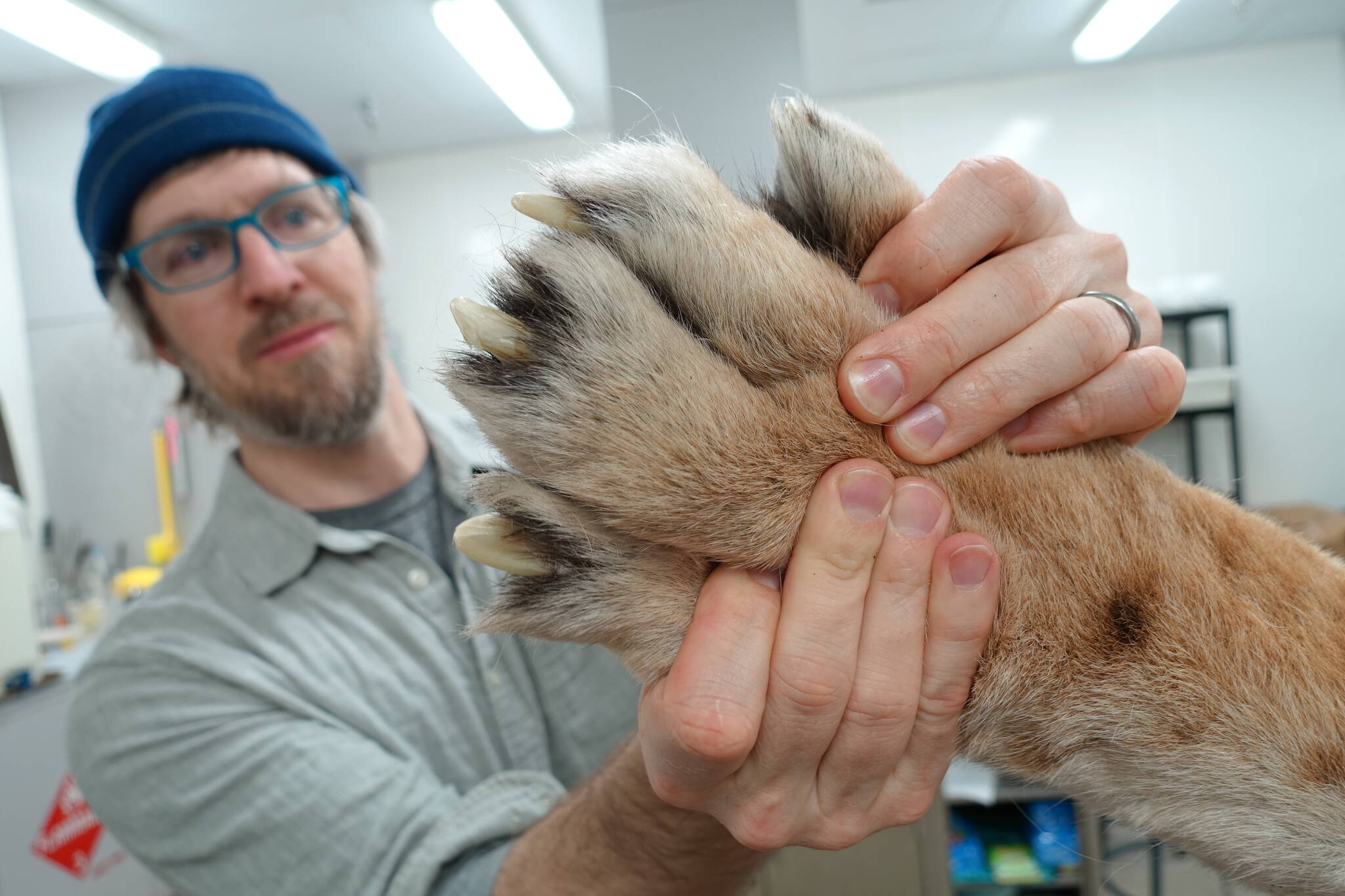It’s a safe bet that Aren Gunderson’s Toyota Tundra is the only one in Fairbanks that has had its bed filled with a Siberian tiger.
Gunderson, who manages the mammal collection at the University of Alaska Museum of the North, recently accepted a dead, frozen, 500-pound former resident of the Alaska Zoo in Anchorage outside the Fairbanks museum recently.
“It filled the 7-foot truck bed,” he said.
What was Gunderson doing with a frozen tiger?
After it thawed, he and museum coworkers Marissa Breslin and Jessica Cornelius skinned the animal and then removed most of its flesh from the bones.
They dried the skin with salt to prepare it for professional tanning. Beetle larvae are now at work defleshing the bones. Like Gunderson, they are laboring to provide answers to future questions.
For example, a researcher might walk into the museum with the bone of a scimitar-toothed cat that thawed out of a northern riverbank. Those giant cats roamed Alaska thousands of years ago and have a skeletal structure like a tiger’s.
Among a number of potential research possibilities, having all the labeled bones of Kunali might help a scientist determine which bone of an extinct scimitar cat or American lion someone has found in Alaska.
“Having the whole large cat skeleton gives us a reference for species IDs and fragmentary parts,” Gunderson said. “We preserve the skin and skeleton as parts we can loan for science and education purposes.”
“Kunali” died at age 19 at the Alaska Zoo in Anchorage on March 13, 2024. A zoo official drove the tiger carcass up the Parks Highway to UAF, where Gunderson slid it into his pickup bed and then transferred it into the museum with the help of a chain hoist.
Gunderson waited for the tiger to thaw on a stainless necropsy table. He then removed the hide and prepared the tiger’s bones and some tissue samples to be part of the museum’s extensive research collection.
Kunali was not the first Siberian tiger Gunderson has encountered in his job. He worked on Kunali’s brother Korol, another gift from the Alaska Zoo, last year. Though Gunderson mostly processes smaller mammals, such as dozens of marmots each year, he has also prepared and preserved camels, flying foxes, sloths, and other animals not found today in Alaska.
“I never thought I’d get to skin two tigers,” said Gunderson, who would be a good partner to have on a moose hunt along with his kitchen knives and skinning blades. “It’s probably the most exotic, coolest thing I’ve done in my career.”
The Siberian tiger, also known as the Amur tiger, is one of six subspecies of tiger. All of them are considered Endangered by the International Union for the Conservation of Nature. There are fewer than 500 Siberian tigers left in the wild; there are probably more of them alive today in zoos.
The giant felines live in eastern Russia birch forests at the same latitudes as Alaska, as well as in China and North Korea. The largest weigh more than 600 pounds, and they are one of few cat species comfortable in the snow.
Kunali and his sibling Korol both came to the Alaska Zoo from a zoo in Syracuse, New York, in 2008. They both lived for more than a decade in Anchorage.
Once its bones are cleaned and each labeled with a unique catalog number, Kunali’s skeleton will be among the tens of thousands housed at the UA Museum of the North. Kunali’s bones could someday join displays of a bowhead whale and a few extinct hadrosaurs that greet visitors near the museum entrance.
“Lots of people don’t get to see a tiger.” Gunderson said. “(Kunali) gives people a reference for how large of an animal it is. It also provides a really impressive example of biodiversity.”
• Since the late 1970s, the University of Alaska Fairbanks’ Geophysical Institute has provided this column free in cooperation with the UAF research community. Ned Rozell ned.rozell@alaska.edu is a science writer for the Geophysical Institute.

